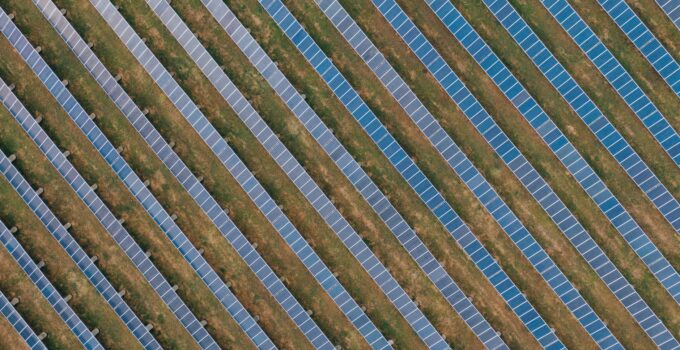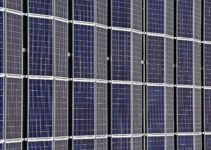Calculating the number of solar panels needed for your energy needs is a crucial step when considering solar power as an alternative energy source. By accurately determining the required number of solar panels, you can optimize your solar panel system to meet your energy demands effectively.
In this ultimate guide, we will explore the importance of calculating solar panels needed, factors to consider during the calculation process, step-by-step instructions, the impact of solar panel efficiency, tips for optimizing your system, and common mistakes to avoid.
Why calculating solar panels needed is important for your energy needs
Calculating the number of solar panels needed is essential to ensure that your solar power system can generate enough electricity to meet your energy demands. Without accurate calculations, you might end up with an insufficient number of solar panels, resulting in an energy deficit.
On the other hand, having too many solar panels can lead to unnecessary expenses. Therefore, understanding your energy requirements and calculating the number of solar panels needed is crucial for optimum system performance.
Factors to consider when determining the number of solar panels required
Several factors influence the calculation of solar panels needed:
- Energy consumption: Evaluate your average daily energy consumption to determine the number of solar panels required.
- Solar panel wattage: Consider the wattage of each solar panel to determine the overall capacity required to meet your energy needs.
- Solar irradiation: Assess the amount of sunlight available in your location, as it directly impacts the energy production of solar panels.
- Available roof space: Calculate the available roof space to determine the maximum number of solar panels that can be installed.
- Orientation and tilt angle: The orientation and tilt angle of your solar panels affect their efficiency, so consider these factors during the calculation process.
- System losses: Account for system losses due to factors such as shading, dirt, and panel degradation.
Step-by-step process to accurately calculate the number of solar panels needed
Follow these steps to calculate the number of solar panels required:
- Step 1: Determine your energy consumption: Analyze your electricity bills to find your average daily energy consumption.
- Step 2: Calculate daily energy production: Consider the solar irradiation in your area and multiply it by the total wattage of the solar panels to estimate the daily energy production.
- Step 3: Adjust for system losses: Account for system losses by multiplying the daily energy production by a factor representing the efficiency of your solar panel system.
- Step 4: Calculate the required number of panels: Divide your adjusted daily energy production by the daily energy production per panel to determine the number of solar panels needed.
- Step 5: Consider practical factors: Take into account the available roof space, orientation, and tilt angle to ensure your solar panel system can be installed optimally.
Understanding how solar panel efficiency affects the calculation
The efficiency of solar panels refers to their ability to convert sunlight into electricity. High-efficiency panels produce more energy per square meter compared to lower efficiency panels.
When calculating the number of solar panels needed, it’s essential to consider the efficiency rating of the panels you plan to use. Higher efficiency panels may require fewer units to generate the same amount of electricity compared to lower efficiency panels.
Tips for optimizing your solar panel system to get the most out of your calculations
Optimizing your solar panel system can help maximize the energy output and ensure efficient utilization of the calculated number of solar panels:
- Install solar panels in areas with maximum sunlight exposure to enhance energy production.
- Clean your solar panels regularly to prevent dust and dirt accumulation, which can reduce their efficiency.
- Monitor and maintain your solar panel system to identify and rectify any issues promptly.
- Consider using solar panel tracking systems to optimize the angle of incidence and improve energy generation.
Common mistakes to avoid when calculating solar panels needed
When calculating the number of solar panels required, it’s important to avoid these common mistakes:
- Underestimating your energy consumption, leading to an insufficient number of solar panels.
- Overlooking the impact of shading on solar panel performance.
- Ignoring the degradation rate of solar panels over time, which affects their efficiency.
- Forgetting to account for system losses due to factors such as dirt, wiring, and inverter inefficiencies.
Frequently Asked Questions about How to Calculate Solar Panels Needed
Q: How do I determine my average daily energy consumption?
A: To determine your average daily energy consumption, analyze your electricity bills over a certain period, such as a month or a year, and divide the total energy consumed by the number of days in that period.
Q: Should I consider the solar panel’s warranty period when calculating the number of panels needed?
A: While the warranty period provides an indication of the expected lifespan of the solar panels, it is not directly relevant to the calculation of the number of panels needed. Focus on the efficiency and energy production capabilities of the panels instead.
Q: Can I install more solar panels than needed to generate excess energy?
A: Yes, it is possible to install additional solar panels to generate excess energy. However, it’s important to consider the available roof space, budget constraints, and the ability of your energy storage system to handle the excess energy.
Expert Advice
Calculating the number of solar panels needed requires careful consideration of various factors. Consulting with a solar energy professional can provide valuable insights and ensure accurate calculations tailored to your specific energy needs. They can help you optimize your system’s performance, select the right solar panel technology, and guide you through the installation process.






